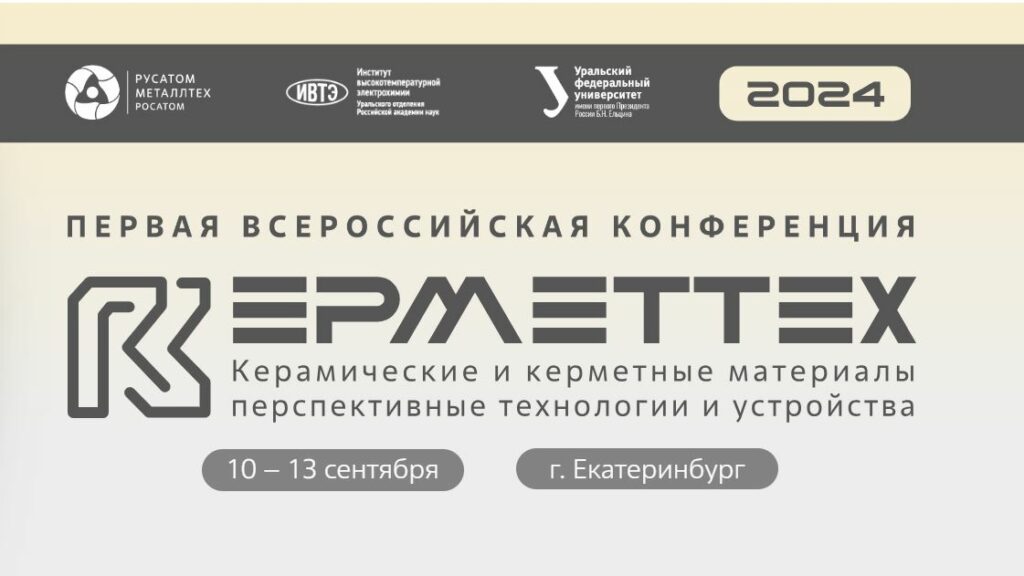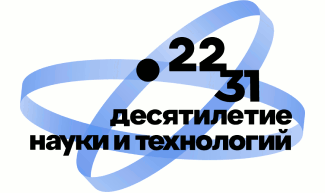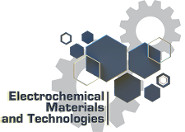The Institute of High Temperature Electrochemistry (IHTE) of the Ural Branch of the Russian Academy of Sciences was founded in December 1957 on the basis of the Laboratory of Molten Salts Electrochemistry headed by M.V. Smirnov (on the resolution of the Presidium of the USSR Academy of Sciences). Establishment of a new Academic Institution specialized in the field of material properties at high temperatures gave an impulse for broadening and deepening researches related to thermodynamics and electrode processes kinetics in the ion melt – metal systems as well as comprehensive study of absolutely new subject – solid electrolytes. On the half-worn out archive-files one can still find the program of fundamental researches focused on the problems of electrochemical production of new materials, preparation and recycling of nuclear fuel and radioactive materials, high efficiency electrochemical power sources:
- Electrochemical processes at high temperatures including physical-chemical properties of molten salts;
- Mechanism and kinetics of electrode processes at the boundary of metals or semiconductors (oxides, carbides) and melts;
- Electrolytic producing the refractory metals in melts;
- Modification of existing and development of novel electrochemical production technologies as well as refining of numerous rare and other metals (zirconium, titanium, beryllium, thorium, tantalum and others);
- High temperature power sources with liquid and solid electrolytes;
- Systematic study of the fuel element in order to find possibilities of their practical application;
- Corrosion processes at high temperatures, especially occurred in molten electrolytes.
This program is still up-to-date because it is connected with development of scientific foundations for new technologies which have strategically importance for economical and technological independence of Russia.
A small but efficient group of 18 scientists established an Academic Scientific School with fairly formulated research directions: physical chemistry and electrochemistry of molten and solid electrolytes. Nowadays about 230 people work in the Institute, nearly 150 of them directly do their research work in 6 scientific divisions of the Institute. The range of their interests includes the whole specter of basic fields of electrochemistry, beginning from fundamental of electrochemical thermodynamics, electrode processes kinetics, electrolyte properties, corrosion and metal protection, theory of current sources to creation of scientific basis for novel electrochemical technologies and devices.
Such outstanding scientists as professor Smirnov M.V., Corresponding Member Karpachev S.V., Academician Baraboshkin A.N. headed the Institute at different times, laid the basis of developing fields of investigations and provided a crucial contribution into modern high temperature electrochemistry.
 |
 |
 |
| Professor M.V. Smirnov |
Corresponding Member S.V. Karpachev |
Academician A.N. Baraboshkin |
The IHTE scientists made the most significant contribution into the fundamental knowledge of molten and solid electrolytes and high temperature electrochemical processes including:
- Theoretical foundations of modern high temperature physical chemistry and electrochemistry of molten and solid electrolytes;
- Principles and realization of electrochemical methods for obtaining and physical-chemical diagnostics of new materials with various functional application used in aggressive environments and high temperatures;
- Fundamentals of resource efficient, safe for nature and humans electrochemical recycling technologies for non-organic matter as well as high temperature devices with molten and solid electrolytes producing direct and the most rational conversion of chemical energy into electrical.
Scientific results obtained at the Institute Laboratories have largely influenced modern ideas about the processes in molten and solid electrolytes and at their boundaries with metals and semiconductors. The major achievements are as follows:
- The molten salts autocomplex model considering the energetic disparity of ions was developed and experimentally proved. The key points of the complex formation in salt mixtures that clarified the notion of “ideality” in the context of ion systems were formulated. This enabled to forecast thermodynamic and transport properties of the melt;
- A theory of transfer process in ionic crystals and current formation at the boundary of solid electrolyte and metal were developed;
- An algorithm for synthesis of solid ionic and mixed ionic-electronic high temperature conductors was suggested;
- A property of molten media in contact with electron conductor to acquire red-ox potential typical for the conductor was established and studied in details;
- Existence of commensurate fractions of metal ions with different oxidation states was determined during measuring equilibrium electrode potentials of numerous metals in different melts. The rates of electro deposition and anodic dissolution of metals and alloys in these media were found to determine by diffusion, no difficulties in ionization and recharge during electrochemical reactions were observed, the processes themselves were in the conditions close to equilibrium.
- A role of alkali metals cations in corrosion process and no-current metal and non-metal transfer phenomenon was determined. Electrochemical nature of metals and alloys corrosion in salt melts was established. The values of steady potentials could be quantitative characteristics of corrosion. Principles of metal protection against corrosion were formulated.
- Scientific basis of electrocrystallization for metals, alloys and chemical compounds in ionic melts were developed. Conditions for formation of nucleating seeds, cathode deposits of certain structure were found. Phase overvoltage during electrodeposition was observed.
- Operating principles for several electrochemical systems of energy conversion, pure hydrogen and oxygen obtaining and quantitative analysis of different gas media were formulated and accomplished.
The group of leading researches of the Institute was awarded with the USSR State Prize for the scientific works «Physical chemistry and molten electrolytes electrochemistry basis development» in 1988.

The USSR State Prize Winners – researchers
First row (from the left to the right) M.V. Smirnov, I.N. Ozeryanaya, N.A. Saltykova, V.N. Nekrasov, V.Ya. Kudyakov;
Second row (from the left to the right) V.A. Khokhlov, A.N. Baraboshkin, V.P. Stepanov, L.Ye. Ivanovskiy, N.G. Ilyushenko.
Honorable scientists (S.V. Karpachev, S.F.Palguev, G.K. Stepanov, V.N. Chebotin, M.V.Perfilyev, L.D.Yushina, Ye.I.Burmakin, A.D.Neuymin) laid fundamental principles of solid electrolytes electrochemistry and high-temperature energy converters.
Results of fundamental research in the field of their practical application:
- Production of new materials with given properties for machine-building, including aero- and rocket production, electronics, energetic, synthetic chemistry and other industries, catalytic aspects of solid and molten electrolytes application.
- Electrochemical energeticsconnected with red-ox reactions in electrochemical systems with molten and solid electrolytes (primary power sources, batteries, fuel cells and electrolyzers for hydrogen producing and reforming of natural fuels) that provide the most rational conversion of chemical energy into electrical.
- Technologies of complex refining natural and technogenic raw materials with the use of unconventional (electrochemical) methods including preparation of nuclear fuel and radioactive wastes recycling.
Examples of completed technological designs connected with the new materials production are as follows:
- Preparation method of difficult-to-form metals surface for cold deformation of metals and deep-drawing alloys, impact molding, multistage short restriking drawing, fitting production by cold heading method and thread rolling in friction units of the mechanisms. It consists of covering a stainless steel firmly attached with the base “metallic lubricants” made from cooper, stannic and zinc. New technology production of hard components from stainless steel increases labor productivity in 10-25 times. Operating factor of metal increases up to 95-98%. Labor intensity decreases up to 8-10 times.
- Harden wear resistant boride coatings on machine details, instruments and dies elongate their operating life in 2-5 times.
 |
 |
| Cold deformation of metals using “metallic lubricants” | Wear resistant boride coatings on machine details, instruments and dies |
- Corrosion resistant zinc coatings of steels odd-shaped products, instruments and machine devices obtained without hydrogenation.
- High emission form-stable materials on the basis of surface alloys of refractory metals with rare-earth and transuranic metals for electronic equipment.
- Production process of metal wool with high surface area for catalytic processing and synthesis of organic compounds.
- New production technology of highly effective titan anodes with diffusion manganese coating for electrolytic production of manganese dioxide.
- Technology of low temperature synthesis of refractory metals carbides fine powders.
- Production technology of powdery hard-magnetic, soft-magnetic, stainless, doped alloys.
- Method of high temperature halvanoplastics for products made of refractory metals such as molybdenum, tungsten, rhenium, iridium. These are the most electropositive metals and that is why during electrolysis of their salts the chemical composition of the metal deposits is very homogeneous. The products obtained (crucibles for growing sapphire crystals and semiconductors, foil for mass-spectrometers, pallets for oxide fuel of nuclear stations tablets moulding and other) are close to monocrystals stucture due to that they are moldable and have a long operating life n contrast to products produced by the method of metallic powder moulding.
Systematic research in the field of high temperature power engineering that has been held in the Institute for more than 40 years opens impressive prospects. Electrochemical way of energy conversion has several decisive advantages comparing to the traditional conversion methods of natural fuel resources, used in “big” power engineering. This is, for instance, a possibility to manufacture electrochemical devices with different capability starting from hundreds of watts to dozens of megawatts that allows meeting the requirement of energy consumers in accordance with world tendencies of independent and local energy consumption and reliability growth of power devices. In electrochemical devices the chemical energy is converted into electrical that helps to eliminate the stage of organic fuel burning with generation of heat first and electricity then. Due to the absence of heat conversion into the work, their coefficient of efficiency both theoretically and practically is higher than the one in thermal power devices.
This is presented on the diagram below:
- Coefficient of efficiency of different ways of natural fuel chemical energy conversion into electrical one
On the basis of the experimental data obtained in the Institute of High Temperature Electrochemistry the following inventions have been developed:
- fuel cells with molten carbonate electrolyte (MCFC);
- solid oxide fuel cells (SOFC) with oxygen- and proton- conductive electrolytes;
- high temperature electrolyzers (HTE) for water decomposition, that are of significant interest in combination with fuel cells for solving the problems of hydrogen energy;
- high temperature solid oxide converters (HTSOC) for hydrogen generation by the method of electrochemical conversion of combustible gases;
- reserve (heating) chemical power sources (R/HCPS) with high energy and power specific values;
- high temperature lithium batteries (HTLB);
- electrochemical sensor device (ES) for gas medium analysis that helps to improve efficiency of natural fuel consumption in thermal power and metallurgical instruments;
- high temperature salt heat batteries (SHB).
These works get the second life due to development of Federal Program on “hydrogen economics” and realization of collaborative “Comprehensive program on hydrogen energy and fuel cells” embraced by the Russian Academy of Sciences and “Norilsk Nickel” Ltd.
For the practical application of fuel cells (SOFC and MCFC) the batteries with different capability starting from hundreds of watts to dozens of megawatts depending on the consumer requirements are assembled. These batteries are the “heart” of electrochemical generators (ECG) and electrochemical power plants (PP) that are the end product of high temperature electrochemical power engineering, based on the usage of fuel cells. ECG and PP are quite sophisticated devices that include apart from electrochemical batteries the additional equipment. The latter consists of heat exchangers, fossil fuel converter (catalyst or electrocatalyst natural gas reformer or carbon gasifier of carbon or organic industrial and human habitation wastes), fuel recombiner (or a system of fuel regeneration – hydrogen separation from the combustion products), compressors for oxidation (air) admission, automatics that keeps necessary temperature regime and correlates energy input with fuel elements capability, the type of a fuel, specific requirements of electrical and thermal energy consumers and etc. Auxiliary (peripheral) units could have different engineering solutions and the price variations are wide. For the electric power installation of the kilowatt class the price for peripheral units could make up to 60-80 and even more % from the total plant price, for the units of megawatt class expenses on auxiliary units will be less than 50% of the total plant price.

Functioning models of electrochemical generator on the basis of solid oxide fuel cells and electrolyzer for water steams decomposition, developed and produced at the IHTE RAS.
High temperature electrochemical generators on the basis of fuel cells with solid oxides and molten carbonate electrolytes could be considered as advanced electric power plants with different capability and purpose. Especially beneficial and intriguing is their application in remote regions of Russia, where there is no transmission lines from large electric power plants (hydro electric plant – HEP, thermoelectric plant – TEP, nuclear power plant – NPP) and it makes no economical sense to lay them due to great power waste or it is impossible to lay them due to the natural environment. World tendencies of energy consumption indicate the growing role of independent electric power plants on the basis of fuel elements in power distribution in cities, urban villages and houses as independent, reserve electricity sources that provide support and reliable functioning of cathode protection gas- and oil pipe-lines from corrosion, city infrastructures, banks, information centers, hospitals, emergency service, rescue service and etc.It is important to denote that for high temperature fuel cells working on light hydrocarbons (methane, propane) it is possible to eliminate converter as the peripheral unit. The process of fuel conversion takes place directly in the battery of fuel cells that enables to balance a heat generated at isothermal reaction of hydrogen oxidation and consumed at endothermic reaction of methane reforming. It greatly simplifies and reduces the price of electric power installation.
High temperature electrolyzers (HTE) where external current is used for water steams degrading by electrochemical method in combination with fuel cells are of great interest for solving the problems of hydrogen energy. Electrical current in them is consumed for the most power-consuming fuel – pure hydrogen. In future hybrid power plants, including any of the existing or developing types of electric power stations that use the energy of atom, sun, wind and other, high temperature electrolyzers with solid oxide electrolyte in combination with electrochemical generators on the basis of fuel cells are the most efficient and save systems of reversible energy storage.
One the important and significant research field of the Institute is scientific rationale and development of new technologies of deep recycling of natural and technogenic raw materials with application of untraditional (electrochemical) methods. Particularly, methods of high-purity lead (coolant) reneration with the controlled impurity 1×10-4 mas.% for the experienced nuclear reactor of the new generation BREST-OD-300, coating material removing of a nuclear fuel element in the regeneration process of exhausted nuclear fuel were suggested and tested; new technological scheme of its recycling using metal-salt multiphase systems were proved.
 |
 |
| Cascade electrolyzer for production of coolant – high-purity lead for nuclear reactor of a new generation BREST-OD-300 |
Scheme of aluminum electrolyzer with inert anode |
Works connected with the aluminum industry are of a great importance. Traditional carbon anodes will be substituted for metal and oxide ones on which oxygen will be generally evaluated. This will improve working conditions in the electrolysis guilds and eliminate emission (carbon monoxide, freons, polycyclic hydrocarbon and others). Apart from that correspondingly to the research sustained economical benefits are possible due to decreasing the price for tone of aluminum approximately on 15%.
Resource saving technologies of recycling of lead containing powders of cooper smelteries and accumulator wastes to obtain pure lead and its alloys, modification of aluminum-silicon alloys (silumins), alloys in molten salts (together with the Institute of Metallurgy and Physics of Metals at the Ur. Br. Rus. Acad. Sci.), diffusion galvanizations of different metalware were tested in a large scale.
The majority of practical developments of the Institute are carried on with leading enterprises and organizations in the Russian Federation. Among them are: Fuel Company TVEL (Rosatom), FSUE (Federal State Unitary Enterprise), RFNC (Russian Federal Nuclear Centre) – VNIITF (Russian Scientific Research Institute of Technical Physics named after academician Zababakhin E.I.), NRC “Kurchatov Institute”, UEChW (Ural Electrochemical Works)OJSC, SSC RIAR (State Scientific Center- Research Institute of Atomic Reactors) OJSC, SverdNIIchemmash OJSC, Chepetsk Mechanical Works JSC, Solykamsk Magnesium Works JSC, UMMC JSC, Uralelectromed JSC, etc.
Within the scope of international cooperation the Institute cooperates with several Research centers and Companies. The aim of this cooperation is to apply knowledge of the Institute in the field of high temperature electrochemistry, highly qualified scientific workers and developed experimental data of research laboratories. Among the international partners there are enterprises and institutes from the USA, Germany, France, Italy, UK, Japan, Korea and other countries.
Governmental support, search for new forms of cooperation with industrial enterprises, research centers and higher education establishments of Russia, as well as strengthening of ties with foreign partners are guarantees of success of the Institute.







